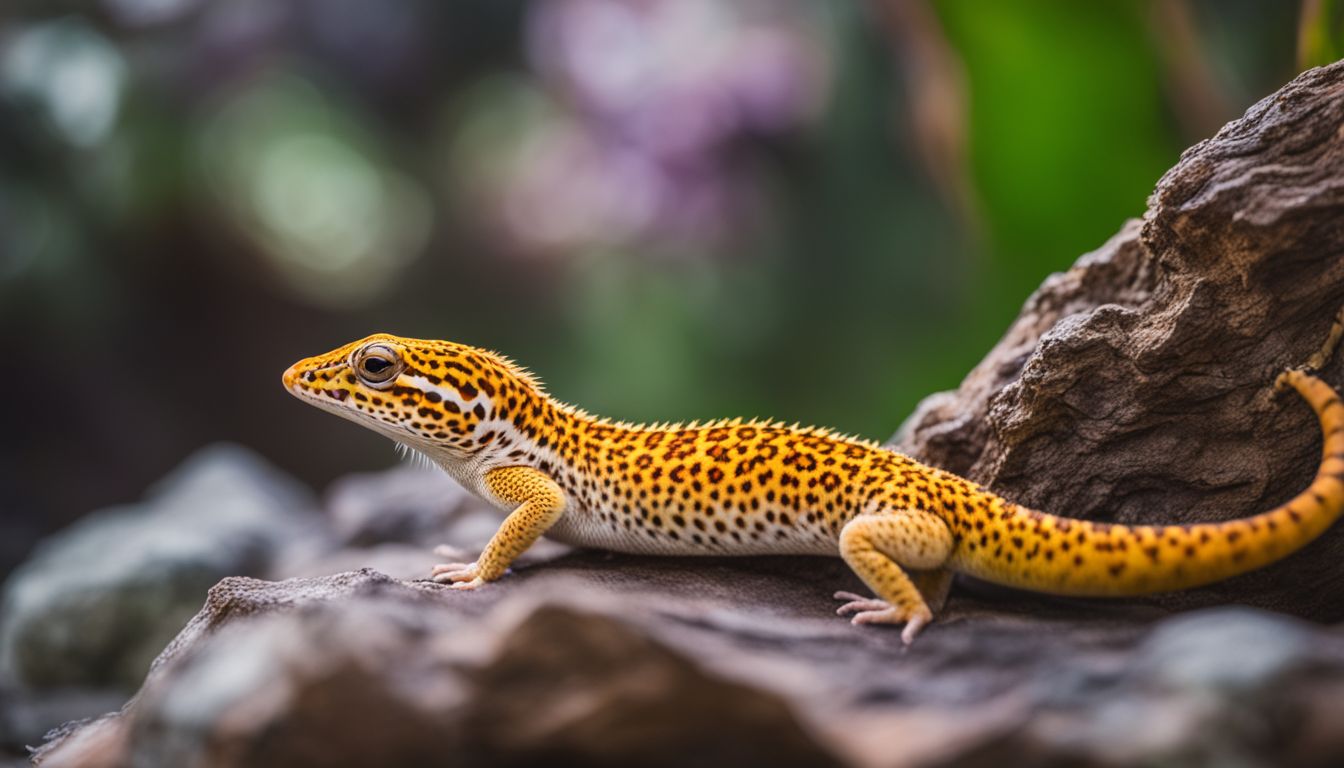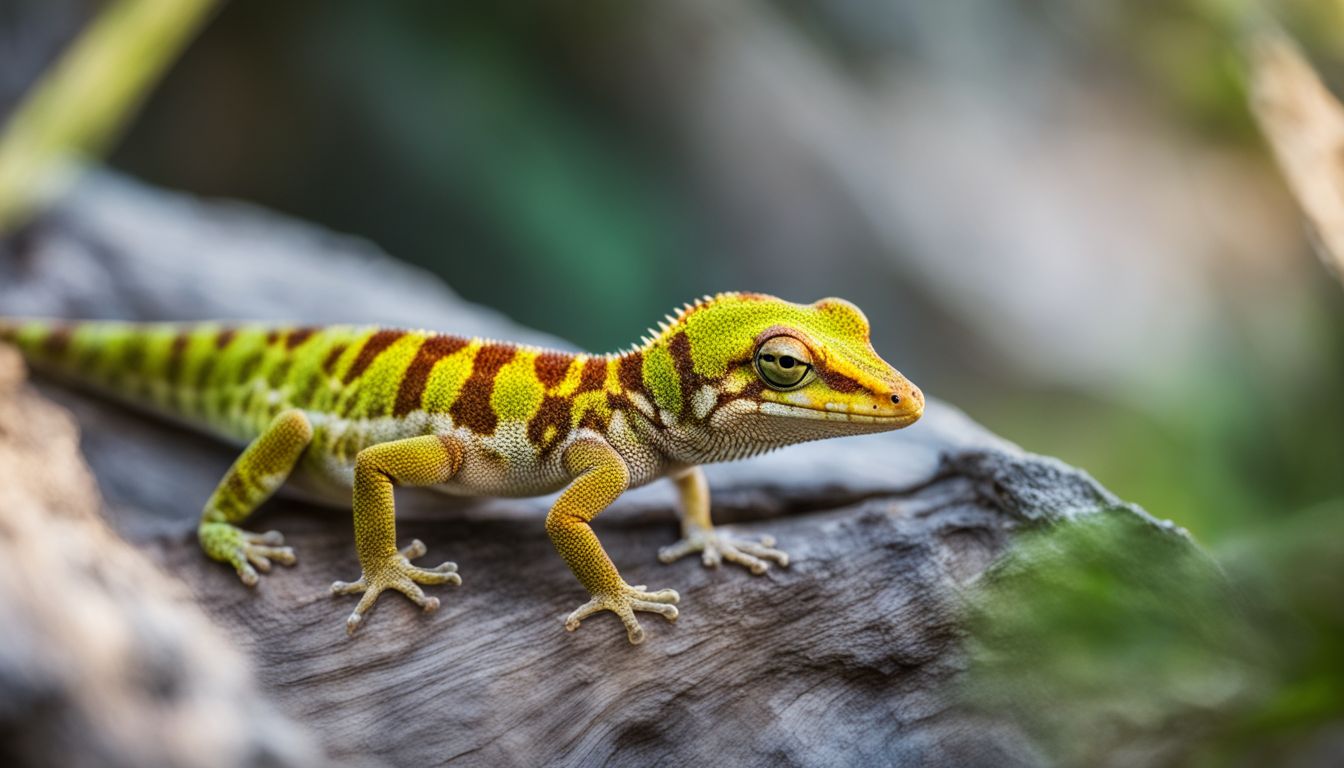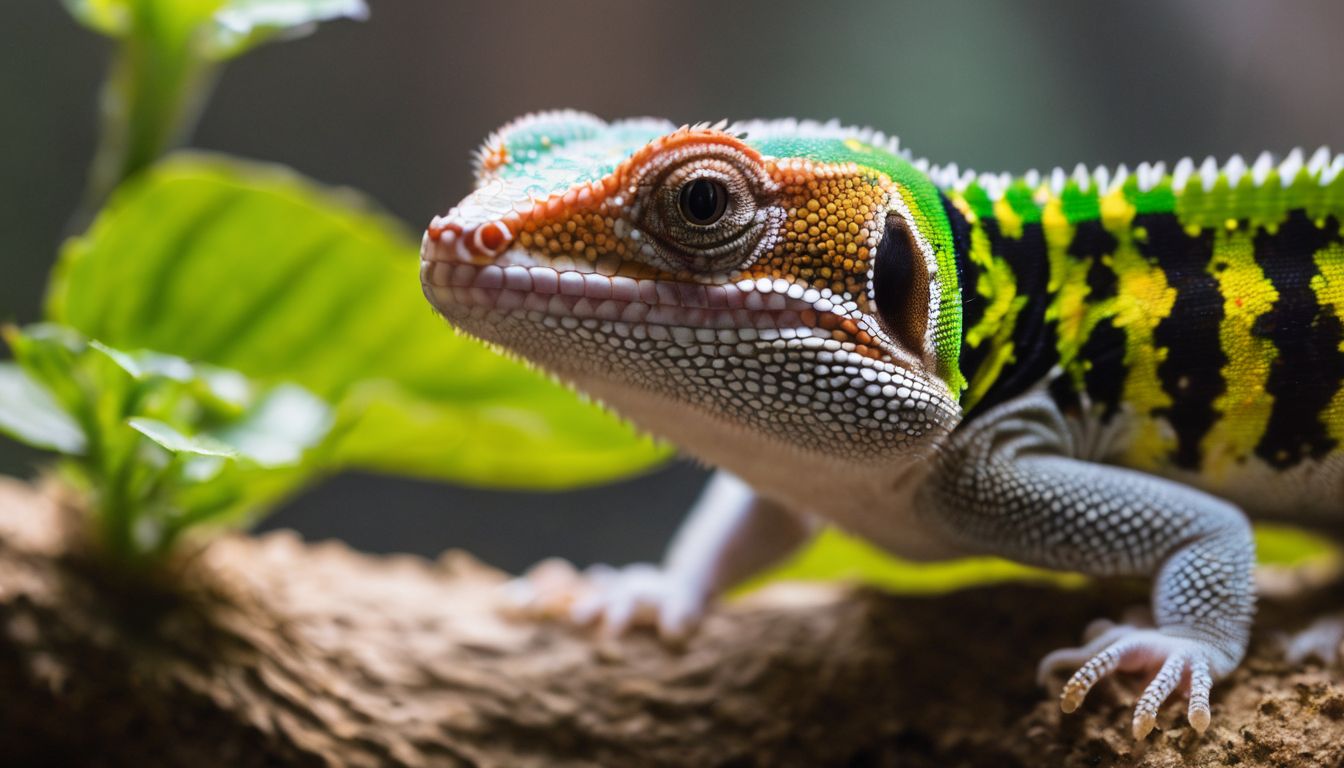Have you noticed your gecko looking a bit different lately? Maybe its vibrant colors are fading, and it’s starting to turn white. You’re not alone in this concern; many gecko owners face the same puzzling situation with their scaly friends.
Geckos changing color can be quite normal, but sometimes it signals something more serious.
One important fact is that when your gecko starts to “go white,” it often means they’re about to shed their skin—a regular part of healthy growth. Our article will guide you through the common reasons why a gecko might change color and provide practical solutions for each scenario.
We’ll help ensure your pet stays happy, healthy, and as colorful as ever! Keep reading to unravel the mystery behind your gecko’s new hue!
Key Takeaways
- Geckos turning white is often a normal part of shedding their skin, but it can also indicate issues like stress, illness, or poor nutrition.
- Factors such as temperature and humidity levels, diet and nutrition, and health concerns can contribute to a gecko turning white.
- Providing an ideal shedding environment, balanced nutrition, proper hydration, and vigilance for signs of illness are crucial in supporting your gecko’s well-being during color changes.
- Seeking veterinary care promptly if your gecko displays signs of illness or abnormal skin discoloration after shedding is essential for maintaining their health.
Understanding Normal Leopard Gecko Coloration

Leopard geckos come in a variety of colors, including yellow, white, and orange with black spots or stripes. These color variations are the result of genetics, with some geckos having albino or patternless morphs.
Typical Leopard Gecko Colors
Gecko colors can be very cool! Most leopard geckos have yellow, brown, and white spots or bands on their skin. These patterns help them hide in the wild. Some special types of these lizards might look different because of their genes.
For example, albino leopard geckos don’t have dark colors; they are more pink or yellow because they can’t make normal color pigments. Another kind is called “patternless,” and these geckos are usually one solid color without spots or stripes.
People really like all the different colors and patterns that leopard geckos can be born with. They enjoy having a unique pet with its own special look. But no matter what colors they have, it’s important for every leopard gecko to be healthy and live in a good home with the right food and care.
The Role of Genetics: Albino and Patternless Morphs
Some leopard geckos have different looks because of their genes. Albino geckos do not have dark colors in their eyes, skin, or scales. This is why they might seem more white or pink than other geckos.
Patternless morphs are also special. They don’t have the usual spots or marks on their skin. Their body can be a single color all over.
Gecko colors can change for many reasons including these genes. But it’s not always because of their parents’ traits that a gecko turns white. Sometimes it’s just part of growing up and getting new skin, like when kids outgrow clothes.
Now let’s talk about what happens when a gecko gets ready to shed its old skin and grow new one.
Common Reasons for a Gecko Turning White

The shedding process, environmental factors like temperature and humidity, diet and nutrition, and health concerns such as stress, illness, and parasites can all contribute to a gecko turning white.
Understanding these common reasons will help you better support your gecko during this color-changing process.
The Shedding Process Explained
Geckos get rid of their old skin and grow new skin. This is called shedding. Before a gecko sheds, its skin turns white because the top layer is getting ready to come off. The process can make your pet look very different for a little while.
To shed well, a gecko needs things like the right heat and moisture in their home. They also need enough water to drink. When everything is just right, your gecko will slide out of its old skin easier.
After shedding, they often eat up the old skin to get extra nutrients!
Environmental Factors: Temperature and Humidity
Geckos need the right temperature and humidity to stay healthy. If it’s too cold, they might not digest food well or might get sick. When it’s too hot, geckos can become dehydrated quickly.
Make sure their habitat has a warm side and a cool side so they can regulate their body temperature. Also, mist their home regularly to keep the air moist for shedding.
Maintaining proper environmental conditions is crucial for your gecko’s health and coloration. Temperature and humidity play vital roles in supporting their physiological functions and overall well-being.
Diet and Nutrition: The Impact on Coloration
A gecko’s diet and nutrition play a crucial role in their coloration. Poor diet or malnutrition can cause a gecko to turn pale or white. A lack of essential nutrients, such as calcium, can lead to health issues like kidney disease, which may manifest as paleness in the gecko’s skin.
Ensuring your pet gecko has a balanced and nutritious diet is vital for maintaining their vibrant color and overall well-being. It is important to monitor the food intake and ensure they receive proper nutrition to prevent them from turning pale.
– Health Concerns: Stress, Illness, and Parasites
Health Concerns: Stress, Illness, and Parasites
Stress, illness, and parasites can cause your gecko to turn white or pale. When a gecko is stressed, it may lighten in color as a response. Illnesses such as kidney disease can also lead to skin discoloration.
Additionally, parasites can impact the health of your gecko and affect its coloration. It’s important to monitor your pet for signs of stress, illness, or parasite infection by observing changes in behavior and appearance.
Ensure that you’re providing a suitable environment with proper temperature and humidity levels while offering a well-balanced diet to support the overall health of your gecko. If you notice any concerning changes in its coloration or behavior, seek veterinary care promptly to address potential health issues before they escalate.
How to Support Your Gecko During Shedding
Create a humid hiding area to help your gecko shed its skin more easily, and provide plenty of fresh water for hydration. Read on to learn how to best care for your gecko during shedding!
Creating the Ideal Shedding Environment
Ensure your gecko’s habitat has a warm hide with a proper temperature gradient. A moist hide will help during shedding. Checking humidity levels is crucial, maintain 20-40% when not shedding and 60-80% during this time.
Use a reptile-safe substrate like paper towels to reduce the risk of ingestion. Also, provide branches or rocks for rubbing against to aid in the shedding process.
Maintain clean water for drinking and soaking, which aids hydration and assists in skin loosening. Avoid handling your gecko excessively during this time as it can stress them out.
Providing Proper Nutrition and Hydration
To keep your gecko healthy, ensure they have a balanced diet. Feed them live insects like crickets and mealworms dusted with calcium and vitamin supplements. Also, provide a shallow dish of fresh water for hydration.
A well-fed and hydrated gecko is less likely to turn white due to malnutrition or dehydration. Ensure their environment also has the right temperature and humidity levels as these factors impact their appetite and overall health.
Now let’s look at “Outdoor Exposure: Can I Take My Leopard Gecko Outside?”
Outdoor Exposure: Can I Take My Leopard Gecko Outside?
Ensuring your leopard gecko’s health means considering outdoor exposure. Always prioritize their safety and comfort, as they can be sensitive to temperature changes. If you choose to take them outside, ensure the environment is secure and free from potential hazards like predators or toxic plants.
Place them in a safe enclosure with proper ventilation, protecting them from direct sunlight and extreme weather conditions while allowing them to explore natural elements safely.
Remember that while outdoor exposure can offer enrichment for your gecko, it’s important to supervise closely and limit the time spent outdoors. Be cautious of stress-inducing factors such as loud noises or sudden movements, which may impact their well-being.
When to Seek Veterinary Care
If your gecko is displaying signs of illness such as a lack of appetite, lethargy, or abnormal skin discoloration that doesn’t improve after shedding, it’s important to seek veterinary care.
Additionally, any sudden changes in behavior or health should prompt a visit to the vet for further evaluation and treatment.
Signs of Illness and When to Act
Look for signs like loss of appetite, lethargy, weight loss, abnormal feces, and changes in skin color. If you see these signs, it’s essential to seek veterinary care promptly. Kidney disease is a common illness in geckos and can be indicated by white or pale skin.
Act quickly if you observe any unusual behaviors or changes in your gecko’s appearance to ensure their well-being.
Conclusion
In conclusion, understanding why your gecko may turn white is essential for their well-being. By recognizing the common reasons and implementing practical solutions, you can support your gecko’s health effectively.
Creating an ideal shedding environment, providing proper nutrition and hydration, and monitoring their overall health are crucial steps. Ensuring these helps prevent discoloration and supports your gecko’s vitality.
Take action now to ensure a vibrant and healthy life for your beloved pet!
FAQs
1. Why is my gecko turning white?
Geckos may turn white due to shedding, stress, illness, or a calcium deficiency.
2. How can I help my gecko during shedding if it turns white?
You can help your gecko during shedding by ensuring proper humidity levels in its habitat and providing a moist hide for easier shedding.
3. What are common signs of stress in geckos that cause them to turn white?
Common signs of stress in geckos include loss of appetite, unusual hiding behavior, and excessive pacing or glass surfing.
4. Can a calcium deficiency cause my gecko to turn white?
Yes, a lack of calcium can lead to health issues like metabolic bone disease, which might manifest as abnormal skin coloring or texture.
5. How can I address the issue if my gecko is turning white due to an underlying health problem?
If you suspect an underlying health issue causing your gecko’s color change, seek veterinary care promptly for diagnosis and treatment recommendations.




